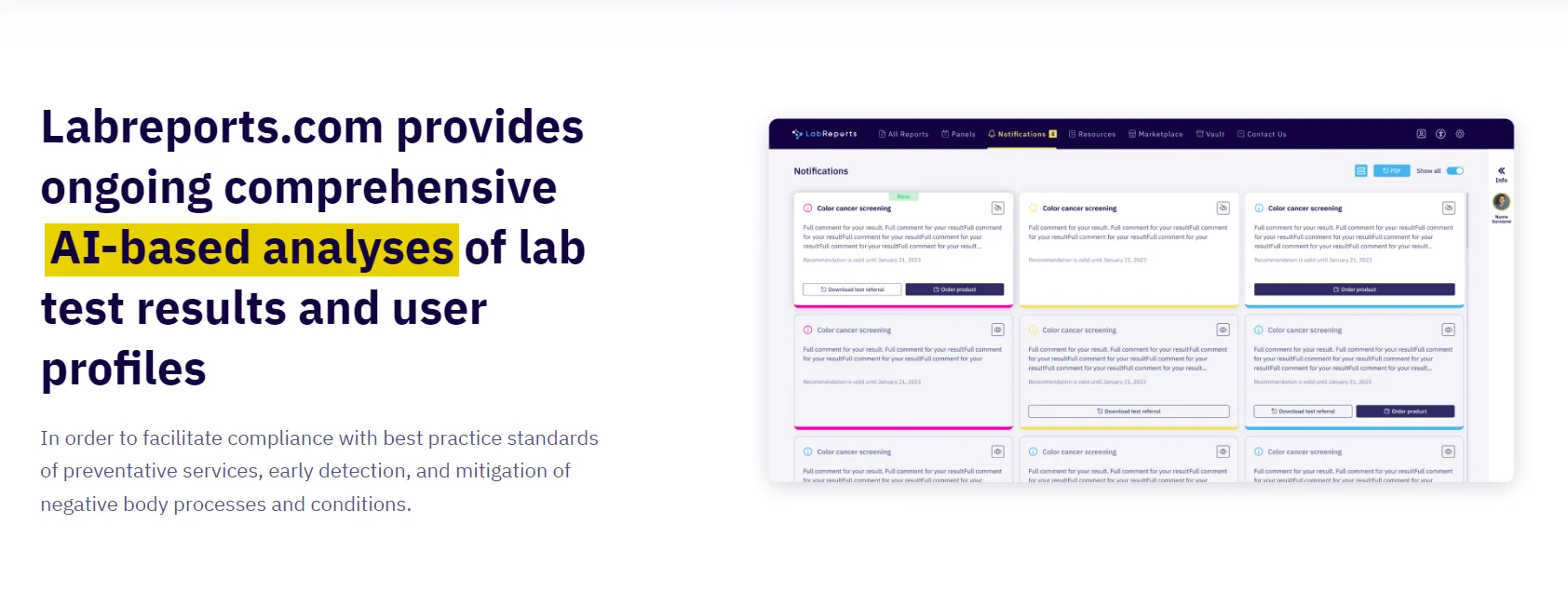For instance, a producing company may use variance evaluation to discover out if there are any important cost overruns in its production course of. One of probably the most highly effective aspects of variance analysis tools is their ability to streamline efficiency evaluation. By offering a comprehensive view of the variances between actual and expected results, these tools enable companies to rapidly identify areas of concern and take corrective action. In this part, we are going to discover how variance analysis tools may be utilized to streamline performance evaluation, together with some tips and real-life case studies. By understanding variance analysis, companies can establish areas of inefficiency, take corrective motion, and make informed choices primarily based on actual knowledge. By following best practices, businesses can use variance evaluation effectively and drive profitability.
It is a crucial part of any business evaluation as it helps businesses understand the reasons why they aren’t assembly their targets. In this part, we will discover the fundamentals of variance analysis, its importance, and how it is utilized in completely different fields. Variance evaluation is a technique used to check precise efficiency with the budgeted or anticipated performance. It includes analyzing the variations between the actual and anticipated results and figuring out the explanations for the variances. Variance evaluation is a proactive method to efficiency evaluation and control, as it helps managers to identify potential issues earlier than they turn into significant issues. To illustrate the power of variance analysis tools in streamlining efficiency evaluation, let’s think about the case of XYZ Corporation, a multinational conglomerate.
Embracing variance analysis tools will undoubtedly result in extra streamlined performance evaluation and in the end contribute to the general success of your group. Performance management is an important side of any group, and it includes measuring, monitoring, and improving the efficiency of employees, processes, and methods. One of the key tools utilized in efficiency administration is variance analysis, which helps to establish the reasons for deviations from expected results. Variance evaluation is a important part of quantitative evaluation mastery, and it helps organizations to make data-driven selections and enhance their overall performance.
It is used to establish the reasons for the distinction and to take corrective action if necessary. Variance evaluation is used to measure efficiency in terms of product quality, production effectivity, and gear utilization. In accounting, variance analysis is used to measure the distinction between precise and standard costs. Variance evaluation http://www.parlcom.ru/katalog-literatury/obshchie-voprosy-prava/kodeks-rf-ob-administrativnykh-pravonarusheniyakh-v-tablitsakh-dlya-avtomobilistov-s-izmeneniyami-na-1-marta-2011-goda1.html is used to measure performance when it comes to price of goods bought, inventory, and operating bills. In finance, variance evaluation is used to measure the difference between precise and budgeted results. Variance analysis is used to measure performance in phrases of revenue, expenses, and income.
Time-consuming – Variance analysis could be a time-consuming process, particularly if it is carried out manually. This is usually a problem for firms that need to make quick decisions primarily based on real-time data. Any points encountered, corresponding to incorrect search results or cost failures, can be logged as defects for further investigation and resolution.
Which Means Of Result In English
For example, if an organization sees a lower in sales, it could be tough to find out if the decrease was as a end result of a specific product line, a specific advertising campaign, or a specific gross sales group. Defect monitoring is a crucial aspect of take a look at management, as it entails capturing, managing, and resolving the issues recognized during testing. Defects are categorized primarily based on their severity and priority, allowing the event team to prioritize and tackle them accordingly. Defect tracking also involves monitoring the status of every defect, from discovery to decision. Instead make sure that what you’ve described, in the actual and expected results, is the exact behaviour of the bug. If you lead the developer in the wrong path, it’s going to take for much longer to repair the bug.
It is essential to ensure that the take a look at environment is set up accurately and that the mandatory test data is available before executing the exams. During take a look at execution, any deviations between the actual and expected results are recorded as defects or points. It entails planning, organizing, and controlling the testing activities to make sure the successful execution of exams and the supply of high-quality software program.
Variance analysis tools enable organizations to check actual performance against budgeted targets, helping them establish deviations and understand the reasons behind them. For instance, a retail company may use variance evaluation to find out if there are any significant differences in gross sales revenue compared to the budgeted quantity. If the precise revenue falls quick, the tool may help pinpoint the specific areas that need improvement, corresponding to a decline in gross sales volume or a decrease in common transaction worth. While it has some limitations, following finest practices can be positive that variance evaluation is effective and offers valuable insights into efficiency.
Learn How Netsuite Can Streamline Your Small Business
By analyzing variances, managers can establish the root reason for the problem and take corrective action to handle the issue. ABC Company, a producing agency, applied variance analysis instruments to streamline its manufacturing processes. By comparing precise manufacturing prices with the budgeted figures, they identified significant price discrepancies in their materials usage.
It can help businesses identify areas of inefficiency and take corrective motion to scale back prices. By analyzing variances in manufacturing prices, for example, companies can identify areas where they will scale back waste, enhance efficiency, or negotiate higher prices with suppliers. Variance evaluation helps businesses establish inefficiencies and take corrective motion. By understanding variance analysis, companies could make informed choices primarily based on actual information somewhat than assumptions.
XYZ Corporation implemented a variance evaluation software across its various enterprise models to observe monetary efficiency. The software enabled the corporate to compare precise financial results in opposition to budgeted targets, identify areas of concern, and take corrective actions promptly. As a end result, XYZ Corporation was able to improve its general financial performance and obtain larger profitability. In conclusion, variance analysis instruments are highly effective belongings for streamlining performance evaluation. Variance analysis instruments also can assist companies identify operational inefficiencies by evaluating actual costs with commonplace or expected costs.
In our e-commerce web site example, the take a look at group would generate reviews that showcase the overall testing progress, including the proportion of check cases executed and the defects discovered. These reviews would help project managers and stakeholders assess the current state of the software and make informed selections about its release. Test reporting includes producing complete stories that provide insights into the testing progress, take a look at coverage, and defect status. These reviews are essential for project stakeholders to make knowledgeable choices relating to the software program’s quality and readiness for release. Test reports typically embrace metrics such as the number of take a look at instances executed, the variety of defects found, and the test coverage achieved.
Investigating Deviations From Expected Outcomes
By offering insights into the company’s operations, variance analysis may help managers to make knowledgeable choices that will enhance the corporate’s efficiency. Lack of accuracy – Variance analysis assumes that the budgeted numbers are correct, which can not all the time be the case. If the budgeted numbers are inaccurate, then the variance analysis will also be inaccurate. This can result in incorrect conclusions and selections being made based mostly on inaccurate information.
- In managerial accounting, variance analysis is a vital tool used to analyze deviations from expected results.
- ABC Company, a producing agency, carried out variance evaluation instruments to streamline its manufacturing processes.
- Variance analysis can be utilized in several areas of a enterprise, such as gross sales, manufacturing, and labor.
- In the earlier chapter, you learnt tips on how to write a flawless summary of your bug report.
Variance evaluation is a robust device used in quantitative evaluation to discover out the difference between precise and anticipated outcomes. It is a vital a half of any enterprise analysis as it helps businesses understand the explanation why they are not assembly their targets. Variance evaluation can be utilized to identify cost-saving alternatives, improve efficiency, and enhance income. By following greatest practices, companies can ensure the accuracy and effectiveness of variance analysis and make informed decisions. Variance evaluation is a crucial software utilized in managerial accounting to research deviations from anticipated results. Variance analysis tools can streamline efficiency evaluation by monitoring key performance indicators (KPIs) in real-time.
Test case creation entails designing and documenting specific check scenarios and take a look at circumstances that will be executed during testing. Test instances are created primarily based on the necessities and specifications of the software program under check. Each test case consists of a set of inputs, expected outputs, and preconditions, which are designed to validate the functionality and habits of the software. In the earlier chapter, you learnt the way to write a flawless abstract of your bug report. In this chapter, you’ll learn how to present helpful extra data in the sections Actual Results and Expected Results.
However, just like another software, it has its limitations that must be taken into consideration. Variance evaluation can provide great insights into the performance of a company, but you will want to do not overlook that it isn’t a perfect system. Standard costing is a technique of cost accounting that includes setting normal costs for every product or service provided by an organization. These standard prices symbolize the anticipated prices for producing a product or offering a service, and they are primarily based on elements such as materials prices, labor prices, and overhead costs. Once the standard costs are established, a company can evaluate their precise costs to the standard prices and analyze the variations.
Precise Outcomes
Both commonplace costing and variance analysis are useful strategies for analyzing the difference between actual and anticipated results. However, they have their very own advantages and downsides, and firms should choose the approach that’s best suited for their needs. It helps managers to discover out the elements that contribute to the difference between precise and expected results.












